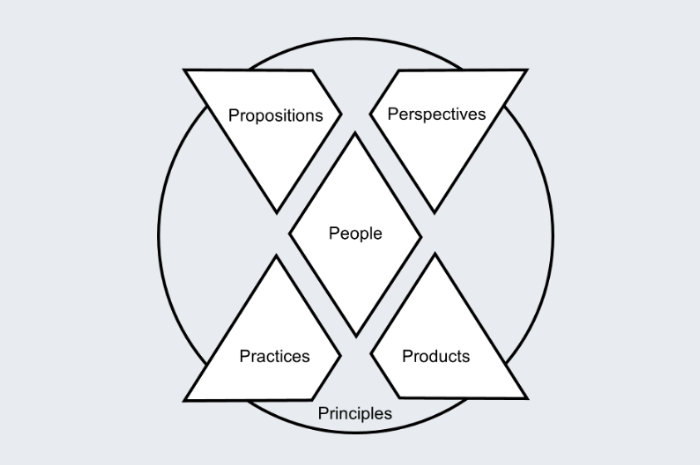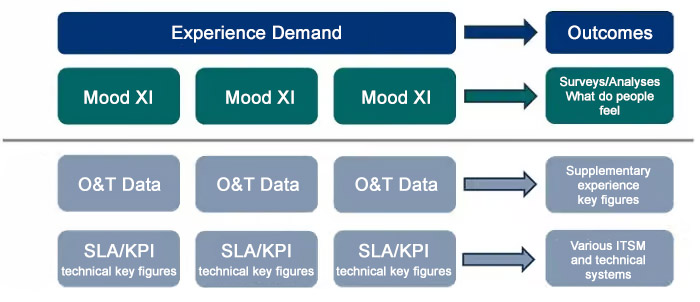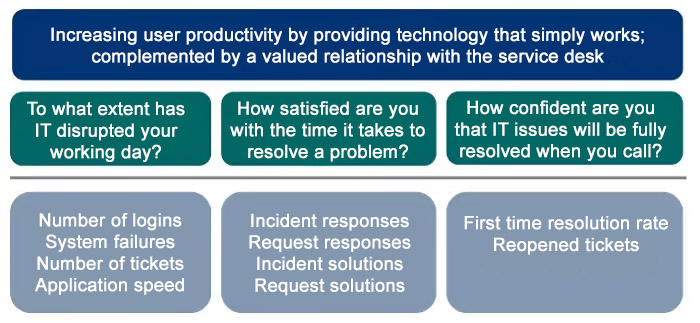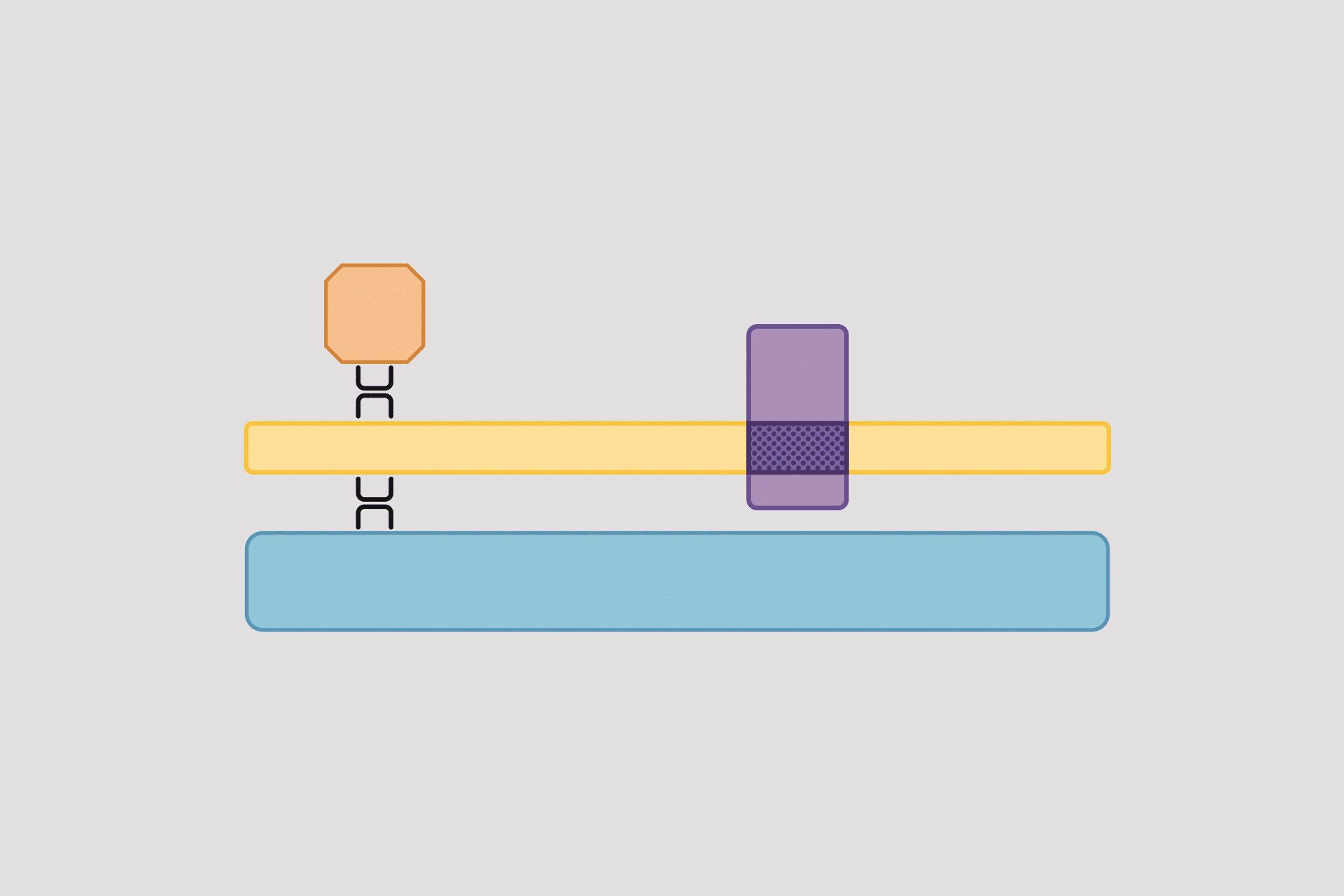Experience Level Agreements (XLA) – Part 2
Frameworks, requirements and advantages of XLA
Experience Level Agreements (XLA) are agreements between a service provider and a customer that are based on the user’s experience with the provider’s services. They measure not only the quantitative but also the qualitative aspects of the service, such as satisfaction, user-friendliness and emotions.
After the first part of this two-part series of articles dealt with the terms experience, service experience, XLA and XM, the second part looks at the use and implementation of XLA, the requirements and benefits. Let’s go!
How can IT service providers use and implement XLA?
In organisational terms, experience management can be located within traditional IT service management. If you want to go deeper and more specific, it is worth taking a look at existing frameworks:
- XLA 6P Framework byMarco Gianotten¹
- ITXM™ ramework from Happy Signals, a software provider for implementing XLA²
- Experience Optimization Framework™ from Experience Collab
Let’s take a quick look at these three frameworks:
XLA 6P Framework
The XLA 6P Framework provides organisations with a guide to help service providers improve the impact of their services on people and businesses. It addresses “6P”:
- a way of thinking (perspectives),
- a way of working (practices and products)
- and a way of life (people, principles and propositions).
Principles describe assumptions that enable and restrict behaviour in the area of Experience Level Agreements. Propositions state reasons for the introduction of XLA and Perspectives formulate approaches for value creation. The People area explains the “organisational unit” that works with XLA, while Practices provide guidance on the use and implementation of XLA (7 XLA Practice Areas). Products are digital resources that support work with Experience Level Agreements.
ITXM™ Framework
The ITXM™ Framework consists of a four-step control loop:
- Measure Experience
- Share results
- Identify improvement
- Implement improvement
1. measure experience
In this step, the ITXM™ framework is used to carry out measurements that serve as a starting point for improvements. The focus is on gaining data-driven insights that enable positive changes at an early stage. This approach is in line with the ITIL4 principle “Start where you are”. Continuous feedback from end users, timely data collection, contextualised measurement, meaningful feedback questions and measurement before implementing changes are critical to successful measurement. Measurement alone does not change anything, it only reveals the current state to enable informed decisions for improvement.
2. share results
The second step of the framework presents a challenge for organisations as it requires the transparent sharing of collected experience data with all parties involved, including IT staff, partners, suppliers and stakeholders. This step is critical to building trust and a shared focus on improving IT performance, which is in line with the ITIL4 principle of “fostering collaboration and transparency”. Both internal and external IT service providers need to take this step, as the disclosure of experience data not only serves to identify problems, but also to recognise successful practices. This allows IT organisations to identify not only the challenges faced by employees, but also the areas where employees are satisfied with the services.
3. identify improvement
Without data-driven insights that identify both current problems and end-user needs, improvements are often based on uncertain foundations such as gut feelings or personal beliefs. It is important to recognise that experiences are multi-dimensional and different areas of IT service delivery need to be examined. This makes it possible to focus on the right areas for improvement. Improvements should focus on people, processes and technology, with an understanding of the real issues end users face. Using real-time experience data, IT teams can quickly identify and fix problems rather than relying on intuition or guesswork.
4. implement improvement
When organisations use the framework cycle, they can prioritise and make the necessary changes to improve end-user experience, employee productivity, operations and business outcomes. In addition, employee motivation and self-confidence are boosted by sharing and celebrating successes. Continuous improvement is reinforced by the increasingly positive impact of work on end users and the quantification of these improvements. This encourages employee engagement and enables IT managers to recognise and further improve the performance of their teams. Communicating successes to stakeholders also builds trust in IT and motivates end users to provide feedback, as they know that their feedback is helping to improve IT services.
Experience Optimization Framework™
The Experience Optimization Framework™ describes a six-stage cycle:
- Evangelize (inspire your ecosystem) includes activities to spread the idea and concept of Experience Management and XLA.
- Explore (know where you are) describes the development of an experience landscape to build a better understanding.
- Envision (Know where you are going) represents the claim and ambition for the development of experience and assigns economic values.
- Enable (create your XLA) defines measurement points, ensures alignment with the self-imposed ambition and helps with the selection of suitable XLA types.
- Execute puts XLA into operation and establishes an XMO (Experience Management Office).
- Embrace (innovate the experience delivered) monitors indicators, communicates results and makes adjustments as part of continuous improvement.
An important element is the XLA Stack™, which combines X data (Experience) with O data (Operational) and T data (Technical). X data contains experience indicators (XI) and makes an experience claim tangible and measurable, while O and T data represent supplementary experience indicators from various ITSM systems and are linked to the X data.
An example of X data could be the goal of increasing user productivity by providing technology that simply works; supplemented by a valued relationship with the service desk. Measurement points are the questions “To what extent has IT interrupted your working day?” or “How confident are you that IT problems will be completely resolved when you call?” For example, the number of logins, number of tickets, initial resolution rate or reopened tickets are measured and linked.
What are the prerequisites for XLA?
Establishing XLA or experience management is a worthwhile idea on the one hand, but also a challenge to implement on the other. Let’s take a look at the various challenges:
XLA need to be positioned differently to SLA
Those responsible for XLA should be aware that the purpose of existing SLA may be wrong. Experience cannot be measured with an SLA metric, nor can it be used directly for improvement. SLA may only exist because IT organisations use them to defend their performance to stakeholders or because they have been inherited from previous teams or when using tools. It is also conceivable that the IT department considers them necessary to control the providers.
Positioning SLA in this way does not create a truly progressive direction for an IT service provider and does not result in positive change for end users or service desk staff. Experience Level Agreements should provide real insight into the IT Service Experience and be positioned accordingly. Behind every XLA should be a goal and a meaning for the end user. Clarifying what benefit an XLA has for the end user or what problem is to be solved or improved is crucial. Of course, SLA can also be used in conjunction with XLA. However, it is important to ensure that the right things are being measured: Experience Level Agreements measure the customer’s experience and results, SLA measure the service provider’s output.
XLA should be developed differently to SLA
SLA almost always have little or no end-user involvement. This is one of the biggest mistakes IT service providers can make when creating XLA. Service Level Agreements should relate directly to the end users’ experience, so they should be involved in the creation and discussion of the content.
Another common mistake is the use of a “one size fits all” approach, similar to the use of SLA. Experience Level Agreements need to be tailored to the experience, i.e. to the problems and needs of the customers and especially the end users. Whereas SLA focus on what can be physically measured: Time, budgets, tickets, etc., XLA focus on the end-user experience. IT service providers should therefore ensure that XLA measure the valuable outcomes for the end user and not operational data.
XLA should be used differently to SLA
SLA are traditionally used to document target achievement and not as an indicator of improvement. In contrast, XLA should be the driving force for change and focus attention on end-user pain points within the service experience.
Another negative aspect of SLA is that they remain unchanged over time and measure the same services. This means that they are rarely reviewed or updated to reflect changing business needs and priorities. Experience Level Agreements should continuously measure the end-user experience and be adjusted over time based on feedback. End-user experiences will change over time, so targets should be set to fulfil end-user needs at all times. You could even say that the main use of XLA is to identify areas that need improvement. SLA can help to understand what is wrong with the process or service, but they cannot be used to identify where the end user experience can be improved.
Some IT service providers that work with SLA measure customer satisfaction and see this as the first step towards experience management. In my view, however, customer satisfaction surveys are rarely suitable as a basis for XLA or experience management. The following list is intended to highlight the problems of conventional customer satisfaction surveys with regard to XLA.
The results of customer satisfaction surveys
- very often only show customer satisfaction on the “surface”, i.e. what can be easily queried or answered.
- can rarely be linked to operational data, i.e. a link between the results of a customer satisfaction survey and the corresponding data from the IT service provider cannot be established.
- rarely have a close temporal relationship to the user’s contact during the survey.
- have the problem of low response rates, as end users are rarely aware of whether they can change anything with their response.
- suffer from bias, as very often only very satisfied and very dissatisfied users give feedback.
- often neglect the users who have not used the services (of the service desk) because they have somehow helped themselves due to a bad experience.
- focus on the service provider’s performance and not on the users’ desired outcomes.
- rarely lead to responses and actions related to the feedback received.
Results from customer satisfaction surveys are important and a useful complement to operational performance metrics, but they are not suitable for sustainable experience management. A quote from Happy Signals illustrates this very well: “Measuring the user experience once a year is like checking the weather outside today and expecting it to be the same every day of the year”.
What advantages do XLA offer?
An important advantage of Experience Level Agreements is that they contribute to a better understanding of the customer by IT staff. By putting users at the centre and taking their experiences and satisfaction into account, XLA promote a customer-centric mentality in service management. As a result, IT staff develop a better understanding of their customers’ needs and expectations and organise their work accordingly.
In addition, Experience Level Agreements promote closer collaboration between IT and business by identifying the key touchpoints where customers interact with products or services. This enables IT staff to understand the critical moments that influence the overall experience and work specifically on improving the customer experience. Overall, XLA help IT staff to develop a better understanding of their customers and optimise their services accordingly.
Another advantage of Experience Level Agreements is that they put users at the centre and thus contribute to a stronger bond between service customers and IT. The appreciation of IT employees increases significantly when their work leads directly to higher customer satisfaction. By receiving direct feedback and recognition for their efforts to improve the user experience, IT professionals feel valued in their contribution to the company’s success and customer satisfaction. The impact of their work on customer satisfaction gives their work more meaning and motivation. This positive feedback strengthens the commitment and identification of IT staff with the company’s goals and values, which ultimately contributes to a more productive and efficient way of working.
Experience Level Agreements can increase customer productivity by contributing to a better customer understanding among IT staff and promoting a customer-centred mentality in service management. As a result, IT employees develop a better understanding of their customers’ needs and expectations and organise their work accordingly. This enables them to work specifically on improving the customer experience, which contributes to a more productive and efficient way of working.
The use of Experience Level Agreements in IT offers a clear advantage in terms of motivating improvement by creating a rewarding environment. In contrast to traditional service level agreements, which focus mainly on the fulfilment of certain performance indicators, XLA place the user’s experience and satisfaction at the centre. This enables companies to better customise their services to the needs of their customers and thus increase their satisfaction and loyalty. This creates a positive feedback loop where employees are motivated to make continuous improvements to optimise the user experience and achieve the goals of XLA. A clear focus on user experience and satisfaction can help to increase the engagement and motivation of IT teams, as they can directly see how their efforts improve the user experience and are therefore rewarded. This not only increases the efficiency and effectiveness of IT services, but also creates a motivating environment that encourages continuous improvement.
Service Level Agreements also allow a service provider to measure the business value of IT Service Management (ITSM). XLAs make it possible to measure the direct impact of customer-centric activities on end users or their organisations. By quantifying, for example, problem resolution time or system availability, Experience Level Agreements can ensure that the services provided improve productivity and user experience. This not only promotes user satisfaction, but also helps to increase the business value of IT services by aligning them directly with customer needs and objectives.
XLA take a holistic approach and go beyond operational metrics. They take into account customer satisfaction, Net Promoter Score (NPS) and other indicators to provide a comprehensive picture of customer sentiment. XLA prioritise the experience of the end user or customer over technical metrics such as response time or availability.
And last but not least: Effective Experience Level Agreements require collaboration between different teams and stakeholders, including customer support, product development and various IT departments. The focus on the user or customer is a unifying element. XLA give IT service providers clear objectives as they are aligned with business goals to improve the customer experience, such as reducing resolution times or improving self-service capabilities.
Summary
Experience Level Agreements are agreements between a service provider and a customer that are based on the user’s experience with the provider’s services. They measure not only quantitative aspects of the service, but also qualitative aspects such as satisfaction, usability and emotions.
Service experience and XLA are important because service experience describes customer satisfaction with a brand, provider, product or service and XLA measure it. It is influenced by various factors such as expectations, interactions, results and values. XLA help to improve the service experience by focussing on the end user’s perspective and adapting the service to their needs and expectations.
IT service providers can utilise and implement XLA by applying existing frameworks and methodologies that provide a guide for designing, measuring and improving the service experience. Examples of such frameworks include the XLA 6P Framework, the ITXM™ Framework and the Experience Optimisation Framework™. These frameworks help to define customer expectations and goals, collect relevant experience data, analyse and share the results, identify areas for improvement and implement the necessary changes.
Notes:
Here you can find the first part of the two-part article series.
Would you like to talk to Dierk Soellner about XLA? Do you have any questions or comments? You can find more information a https://www.dierksoellner.de/xla/.
[1] Marco Gianotten: XLA® Pocketbook
[2] Happy Signals: The Practical Guide to XLAs
If you like this article or would like to discuss it, please feel free to share it in your network.
Dierk Soellner has published further articles in the t2informatik Blog, including

Dierk Soellner
His clients range from DAX corporations to medium-sized companies to smaller IT service providers. He likes to tweet and regularly publishes expert articles in print and online media. Together with other experts, he founded the Value Stream initiative.






